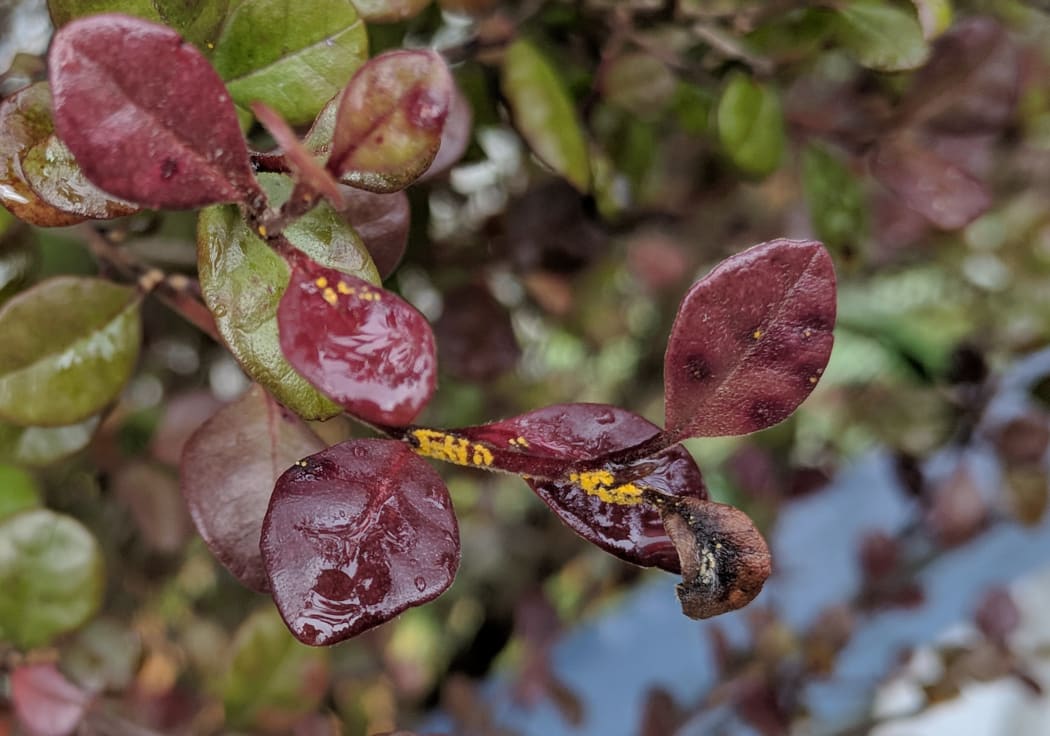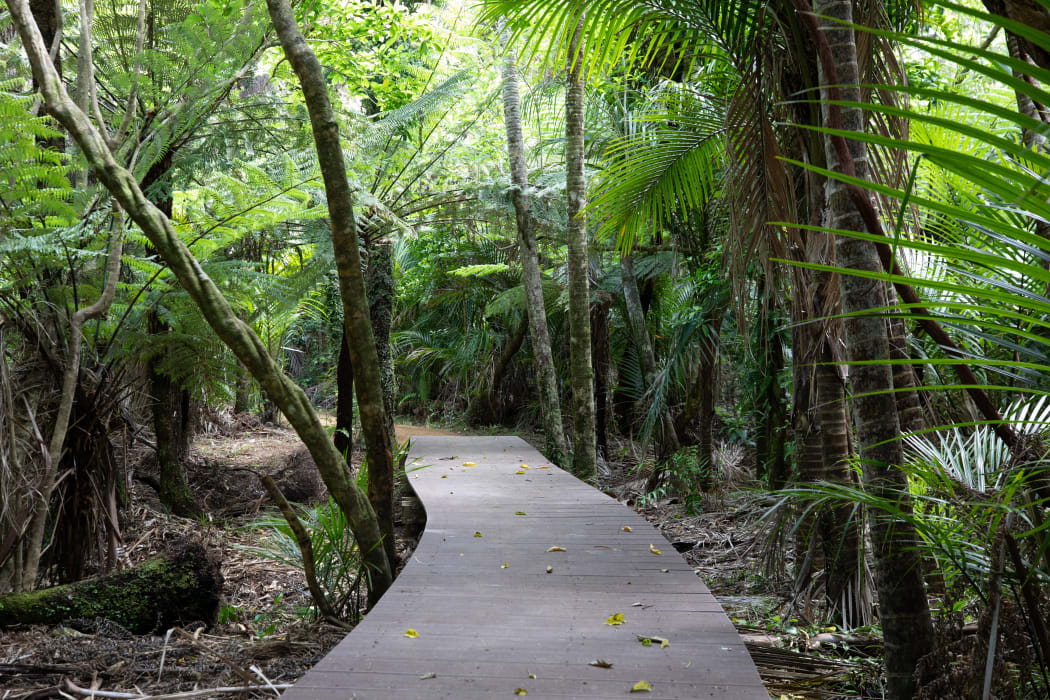
Country calf days were cancelled as Mycoplasma Bovis ran rampant Photo: RNZ / Conan Young
New Zealand has more or less kicked Covid-19 to the kerb (let's call this week a hiccup), but what about other diseases we're trying to eradicate?
Today The Detail's Jessie Chiang looks at where we’ve got to with myrtle rust, kauri dieback and mycoplasma bovis, and why it's important.
Myrtle Rust
It was first recorded in South America in the late 1800s but has now been reported in many countries around the world.
In 2017, myrtle rust was detected on the New Zealand mainland and the Ministry for Primary Industries now considers it widespread in the country, affecting ramarama and rātā the most.
Not a lot is known about those consequences, there's no cure for myrtle rust at the moment and it's very easily spread - by the wind.
Peter de Lange is an associate professor at Unitec's school of environmental and animal sciences, and he's also a part of the government funded Beyond Myrtle Rust research programme.
In March this year he experienced first hand just how bad it's become in the Awaroa Valley in the Waikato.
"I felt like crying because all the ramarama down that valley had myrtle rust in them and were dying," he says.

Myrtle rust has been discovered in Highbury, Wellington Photo: Matthew Robinson
De Lange tells The Detail about suggestions to store the seed of infected plants and try to grow them again when a cure is found for myrtle rust.
He also talks about an unlikely potential saviour - a type of maggot.
Kauri Dieback
The fungus-like disease has been making headlines for years and is known as a type of pathogen, also called phytophthora.
Peter de Lange says previous research suggests not only that it's native to our country, but it's been here for hundreds of years.
"Sequencing data suggests that kauri dieback, as a minimum, has been in New Zealand for 600 years, a lot longer than that would be my guess" he says.
But de Lange says in recent years, the disease has become increasingly virulent and he gives The Detail some reasons why.
Mycoplasma Bovis
It was a devastating blow to New Zealand farmers when cattle were first found to be infected with it in July 2017.
MPI's Chief Science Advisor, Dr John Roche, says while there are no food safety problems for humans in consuming meat or dairy with mycoplasma bovis (M. bovis), it makes cows extremely sick.
"It's a bacteria that is highly resistant to the vast majority of antibiotics available," he says.
The government decided to try to eradicate the disease (taxpayers shelled out more than $500m to do so), which meant killing every single cow on every property that had a case of M. bovis.
That meant healthy cows too because the disease could lie dormant and only flare up later.
But three years later, of the 250 properties that have been found with m bovis, there are only three active cases.

Boardwalks at the Kitekite Falls track at Piha - Peter de Lange is not sure they're the right move Photo: RNZ / Dan Cook
"We've got a really rigid surveillance system in place now to make sure that we pick those herds up really, really quickly to stop it spreading and growing again," says Dr Roche.
"No other country has ever tried or been successful in eradicating mycoplasma bovis."
Why is eradicating these diseases important?
You might be thinking shouldn't we be focused on trying to recover from Covid-19?
Here's Peter de Lange's take.
"We've got an economy in trouble and I get it, people are suffering," he says.
"But our environment, we depend on, and the more that we strangle it, it's like sitting in a tank and pulling out the oxygen, we are going to suffer if we don't do something."


